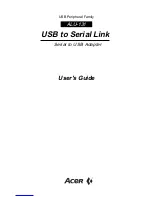
4
APA-358 Installation Guide
Part Number: 510604-00, Rev. A
Print Spec Number: 492717-00
Current Date: 5/19/94
ECN Date: 5/31/94
AAAA
AAAA
AAAA
AAAA
AAAA
AAAA
AAAA
AAAA
AAAA
AAAA
AAAA
AAAA
AAAA
AAAA
AAAA
AAAA
AAAA
AAAA
AAAA
AAAA
AAAA
AAAA
AAAA
AAAA
AAAA
AAAA
AA
AA
AA
AA
AA
AA
AA
AA
AA
AA
AA
AA
AA
AA
AA
AA
AAAAAAAAAAAAAAAAAAAAAAAAAAAAAAAAAAAAAAAAAAAAAAAAAAAAAA
A
A
A
A
A
A
A
A
A
A
A
A
A
A
Connecting the MiniSCSI EPP
WARNING:
Turn
OFF
the computer, printer,
and SCSI devices when connecting or dis-
connecting the MiniSCSI EPP. This protects
against damage to any components.
Connect the MiniSCSI EPP parallel port connector to
a parallel printer port on your computer. You may
use either LPT1, LPT2 or LPT3—the MiniSCSI EPP
drivers automatically detect which port is in use.
If your parallel printer port has a copy-protection
device (commonly known as a dongle) or other non-
printer product connected to it, you should remove
the device from your printer port and connect it to
the printer passthrough connector on the MiniSCSI
EPP. If this arrangement causes any problems,
either the dongle or the MiniSCSI EPP must be relo-
cated to a different parallel port.
Connecting SCSI Peripherals
1
Connect the first SCSI device to the SCSI connec-
tor on the MiniSCSI EPP.
2
Connect other SCSI devices (up to seven total) by
daisy-chaining them to the first SCSI device.
SCSI devices are daisy-chained by connecting
cables in a single, continuous series called the
SCSI bus. SCSI bus cables must run directly from
one device to the next, with no branches. The
SCSI connector on the MiniSCSI EPP is a 50-pin
Centronics-type external connector.
Caution:
The MiniSCSI EPP supports only
single-ended SCSI devices. Do not connect
differential SCSI devices to it. Read the
device’s documentation to determine
whether it is single-ended or differential.






























